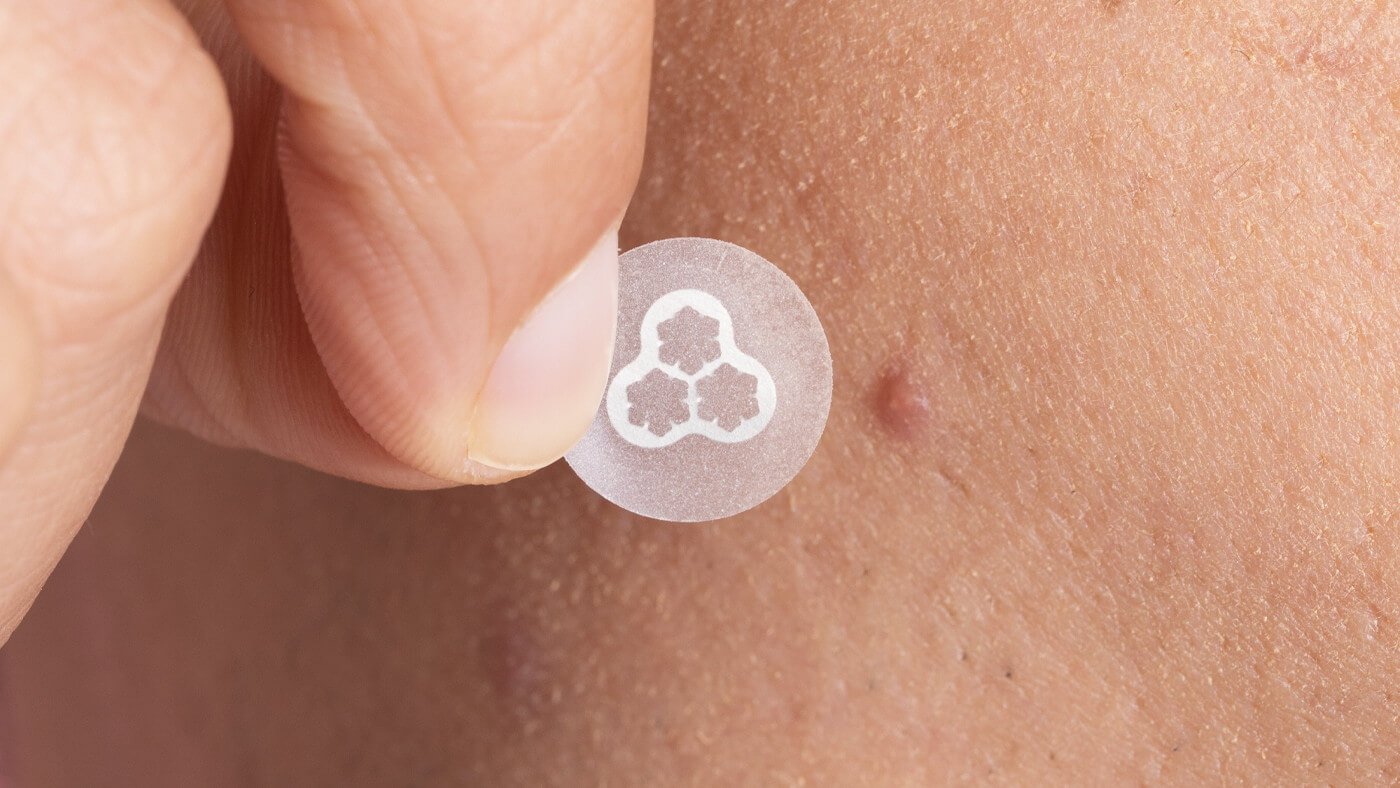In contrast to whitehead pimples, cystic pimples usually don’t come to a head. Instead they appear as angry, red bumps with the pimple gunk deep in the skin.
While most pimple patches work best on surface pimples, the same patches may not be as helpful on pimples with the gunk deep in the skin.
So can you use any pimple patches on cystic pimples?
Cystic Pimples vs Whiteheads
Well, first it helps to know what the difference is between whitehead pimples and cystic pimples.
Whiteheads and cystic pimples are pretty opposite in almost every aspect except for how they form. Acne typically pops up when dead skin cells and excess sebum mix to clog up pores but they can end up becoming different kinds of pimples.
Whiteheads tend to pop up close to the surface of the skin with a visible white or yellowish bump. These are the kinds of pimples that are the most tempting to pop since it doesn’t usually take a lot to squeeze out the gunk.
Although it may be easier to pop whiteheads it's not always recommended since popping a pimple (any kind of pimple) can leave behind some scarring. But, if you really can’t keep yourself from picking at a whitehead, always do so with clean hands, use q-tips to apply pressure, and never apply too much pressure.
While whiteheads pop up close to the surface of the skin, cystic pimples occur deep in the skin. With cystic pimples you likely won’t see any visible gunk since it’s trapped deep in the pore. The spot tends to look inflamed, red, and can feel painful to the touch.
When it comes to cystic pimples, there’s not really anything there that you can pop. Since all the pus is deep in the skin, trying to pop the pimple may not really yield any results. You can squeeze and squeeze the spot but it will only result in increased redness and swelling, and eventually scarring.
For this reason it’s best to keep your hands off cystic pimples.
Can I patch up a cystic pimple?
When it comes to patching up pimples, typical blemish patches work best on pimples that have the gunk close to the surface of the skin, aka whiteheads.
Blemish patches (like our original Blemish Patch) are made with hydrocolloid to help catch all the gunk that’s on the surface of the skin. But, they work their magic best when the pimple has a visible whitehead.
On the other hand, since cystic pimples have all the gunk trapped deep in the skin, regular hydrocolloid patches won’t really be able to capture any of that gunk. Instead you can opt for hydrocolloid patches infused with pimple-fighting ingredients or hydrocolloid patches with microneedles.
Some pimple patches are infused with ingredients like Salicylic Acid to help break down pore clogging impurities (like our Extra Strength Blemish Patch). Salicylic Acid is known for its pore-unclogging abilities and with cystic pimples occuring deep in the pore, patches infused with this ingredient can help minimize the size of these kinds of pimples.
But, if you’re dealing with a particularly irritated deep pimple, you can use hydrocolloid patches with microneedles. The whole point of the microneedles is to help deliver ingredients straight to the pimple to help reduce the pimple size and calm the spot at the source, like our EraZit Magnesium Microneedle Patch. Our EraZit patch is infused with Magnesium to help soothe deep pimples and delivers the ingredient straight to the spot.
However, if your cystic pimples seem to stick around way too long and are super painful then it’s best to seek a dermatologist’s advice.

To wrap up…
Regular hydrocolloid patches (with no added ingredients) typically work best for whitehead pimples. But, for cystic pimples you can patch them up with microneedle patches or pimple patches infused with ingredients like Salicylic Acid.




